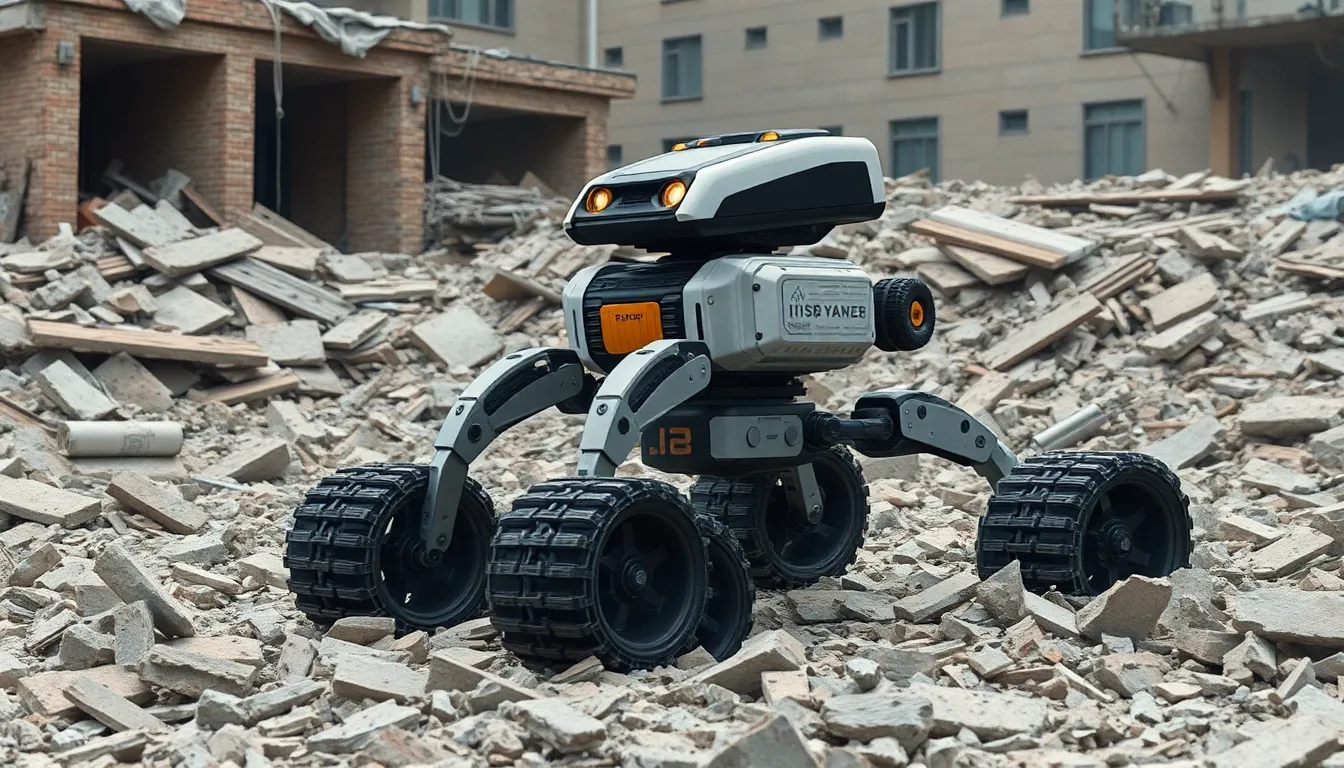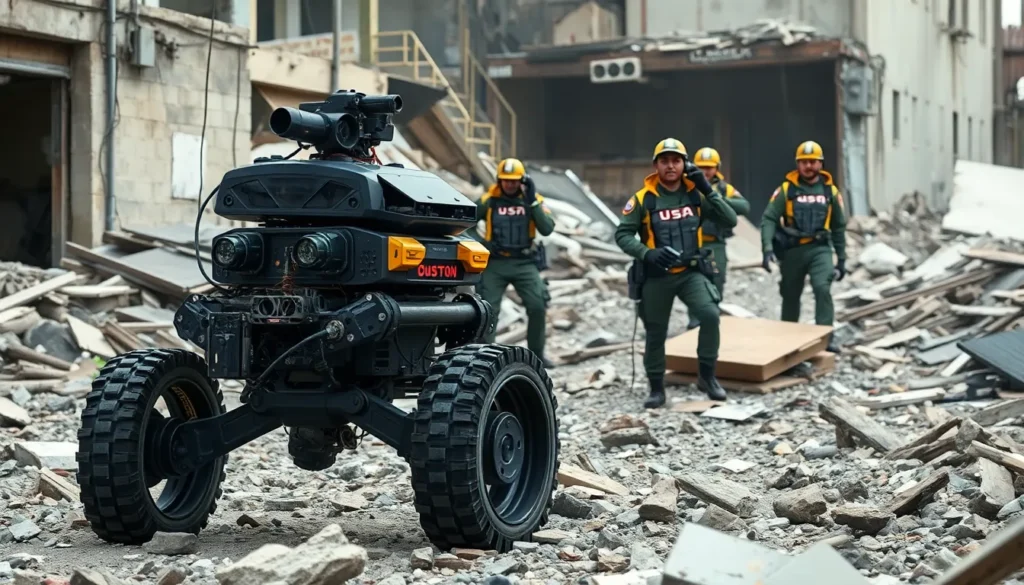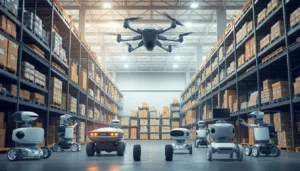In a world where robots are often depicted as shiny, delicate machines, rugged robotics is here to shake things up—literally. These tough little marvels are designed to tackle the most extreme environments, from disaster zones to the depths of the ocean. Forget about robots that shy away from a little mud; these are the all-terrain warriors ready to brave the elements and save the day.
Table of Contents
ToggleOverview of Rugged Robotics
Rugged robotics refers to the specialized design of robots capable of operating effectively in extreme environments. These machines serve critical roles in disaster zones, underwater settings, and other challenging terrains. Built from durable materials, rugged robots withstand harsh conditions and continue functioning where traditional robots fail.
Applications span various fields. Search and rescue operations utilize these robots for locating survivors in disaster-stricken areas. Underwater exploration benefits from their robust design, allowing them to navigate treacherous aquatic environments. Agricultural industries employ rugged robots to handle rough terrains, ensuring efficient farming processes.
Key features define rugged robotics. Water resistance prevents damage in wet conditions, while dustproof designs maintain performance in sandy environments. Advanced sensors enable perception of surroundings, ensuring safe navigation and task execution. Battery life extends to handle prolonged missions, reducing downtime.
Examples of rugged robotics include Boston Dynamics’ Spot and the iRobot Marauder. Spot, designed for various terrains, has been deployed in disaster relief scenarios. The Marauder, built for outdoor missions, excels in surveillance and reconnaissance tasks.
Research continues to advance rugged robotics capabilities. Innovations focus on improving mobility, enhancing artificial intelligence, and integrating new materials for increased durability. As these technologies evolve, the range of missions rugged robots can tackle expands, contributing to their effectiveness in saving lives and improving operational efficiency across sectors.
Applications of Rugged Robotics

Rugged robotics plays a vital role across various industries, showcasing their resilience and effectiveness in demanding environments. Their applications span defense, industrial settings, and critical situations like search and rescue.
Defense and Military Use
Rugged robotics significantly enhances defense operations by conducting reconnaissance missions in hostile areas. Unmanned ground vehicles (UGVs) assess threats and gather intelligence without risking human lives. These robots also facilitate logistical support, transporting supplies across difficult terrains where traditional vehicles may fail. Notably, the U.S. military employs robots like the PackBot to defuse explosives, illustrating their integral role in safety and operational efficiency. The combination of advanced sensors and adaptive mobility makes rugged robots essential for modern military tactics.
Industrial Automation
In industrial settings, rugged robotics increases productivity by automating tasks in challenging environments. Manufacturers utilize these robots for heavy lifting and transportation on uneven floors, proving their strength and stability. Factories often incorporate robots for routine inspections in extreme conditions, reducing workplace hazards while ensuring safety compliance. Companies also target outdoor work sites, where harsh weather can impede operations. Noteworthy examples include the use of robots in mining, where they navigate adverse environments, streamlining processes and minimizing human exposure to danger.
Search and Rescue Operations
Rugged robotics serves crucial functions in search and rescue scenarios, rapidly locating survivors in disaster-stricken areas. Equipped with advanced sensors, these robots navigate debris and challenging terrains that may hinder human efforts. Their ability to operate in disaster zones—such as earthquakes or floods—demonstrates their importance in emergency response. For instance, the RoboCup Rescue Project highlights robots that autonomously search for trapped individuals, speeding up rescue operations significantly. The integration of rugged robotics in these operations enhances the likelihood of saving lives under extreme conditions.
Key Technologies in Rugged Robotics
Rugged robotics leverages advanced technologies to operate effectively in harsh environments. Key components include sensors and navigation systems that enhance their capabilities.
Sensors and Navigation
Sophisticated sensors enable rugged robots to adapt to challenging terrain. These sensors, such as LIDAR and thermal imaging, aid in obstacle detection and environment mapping. Navigation systems incorporate GPS and inertial measurement units for precise positioning. Sensor fusion techniques improve situational awareness, allowing robots to navigate debris and hazardous zones safely. Enhanced navigation capabilities contribute significantly to successful search and rescue operations and industrial applications.
AI and Machine Learning Integration
AI and machine learning play a pivotal role in rugged robotics. Algorithms analyze data collected by sensors to optimize decision-making processes. Real-time analysis enhances navigation accuracy, improving operation efficiency in dynamic environments. Machine learning models enable robots to learn from experience, adapting to various tasks over time. Continuous advancements in AI integrate advanced cognitive functions, allowing robots to complete complex missions autonomously and respond effectively to unpredictable scenarios.
Challenges in Rugged Robotics
Rugged robotics faces several significant challenges in their development and deployment. The harsh environmental conditions often impede functionality, causing damage or reducing performance. Mechanical stress from rough terrains can lead to wear and tear, necessitating frequent maintenance and repairs.
Battery life represents another critical hurdle. Operating in extreme situations demands extended power supplies. Limited battery capabilities restrict the duration rugged robots can perform their tasks efficiently. Advanced energy storage solutions need exploration to enhance endurance.
Weather conditions also pose difficulties. Rain, snow, and extreme temperatures can affect reliability and navigation. Engineers must design robots capable of performing consistently despite such challenges. Water resistance and temperature tolerance represent essential features in this regard.
Communication systems encounter interference in remote areas, complicating remote control and data transmission. Reliable signals guarantee effective operation, particularly in search and rescue missions. Robust communication technologies must evolve to ensure connectivity in diverse environments.
Finally, the integration of artificial intelligence must overcome obstacles. Machine learning algorithms require extensive training in varying conditions. Ensuring accurate decision-making and adaptability in unpredictable scenarios is vital for efficiency. Continuous research and development can potentially bridge these gaps in performance.
Overall, addressing these challenges involves innovation and collaboration across multiple disciplines, which can improve the effectiveness of rugged robotics. Each obstacle presents an opportunity for advancement in technology, leading to the enhanced capabilities of robust machines.
Future Trends in Rugged Robotics
Advancements in rugged robotics are redefining their applications and capabilities. One major trend involves the integration of artificial intelligence, enabling robots to perform complex tasks autonomously. Enhanced AI can improve decision-making processes and allow for better adaptation to unpredictable environments.
Another notable trend highlights the development of more durable materials. Innovations in lightweight yet robust composites extend the operational life of rugged robots in extreme conditions. These materials also contribute to reducing the overall weight, enhancing mobility.
Collaboration among industries plays a crucial role in shaping future rugged robotics. By sharing insights and expertise, sectors such as defense, healthcare, and agriculture can develop multi-functional robots. The ability to leverage cross-industry knowledge accelerates the pace of technological advancements.
The demand for telepresence capabilities in rugged robots is increasing. These systems allow operators to remotely control robots in hazardous environments, improving safety during high-risk operations. Enhanced communication technologies ensure reliable data transmission even in challenging conditions.
Focus on sustainability is becoming essential in the design of rugged robots. Engineers are prioritizing energy-efficient systems and developing robots equipped with renewable energy sources. Solar panels are one example of technology being integrated to support continuous missions.
Finally, the emphasis on user-friendly interfaces is crucial for operators. Intuitive control systems simplify the interaction between humans and robots, facilitating smoother operations. Training programs for end-users will further enhance the efficiency of rugged robotic systems in field deployments.
Rugged robotics stands at the forefront of technological innovation. These machines are reshaping how industries approach challenges in extreme environments. With their resilience and advanced capabilities, they’re not just tools but vital assets in critical operations.
As research continues to push the boundaries of rugged robotics, the integration of AI and new materials will enhance their effectiveness. The focus on sustainability and user-friendly designs will further improve their deployment in various sectors.
The future holds immense potential for these all-terrain warriors, promising to transform emergency response, industrial operations, and exploration. As rugged robotics evolve, they’ll play an increasingly significant role in safeguarding lives and enhancing productivity across the globe.










